As we age, our bodies often betray us. We start noticing little malfunctions. We may develop age-related diseases.
Can we prevent this bodily breakdown?
Everyone knows the right preventative measures – getting proper nutrition, sleep and exercise and avoiding unhealthy habits like smoking.
In addition, researchers called geroscientists are studying how to maintain or enhance the function of physical systems that fade over time.
World-leading geroscientists came to Israel recently to share their latest findings on the biology of aging at the two-day Longevity Nation conference organized by Vetek (Seniority) – the Movement for Longevity and Quality of Life in Israel.
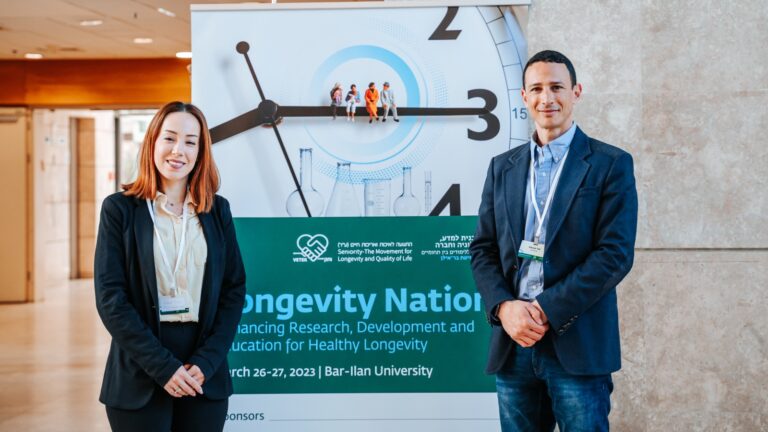
Below are summaries of five Israeli presentations at the conference.
Energizing cells
Most age-related conditions – “diabetes, kidney insufficiency, bone marrow failure, you name it” – stem from dysfunction of the mitochondria, the power station of almost every cell, said Natalie Yivgi-Ohana, founder of Minovia Therapeutics.
“Mitochondria use oxygen to generate energy and also produce hemoglobin and steroid hormones. In short, these organelles control life and death,” she said.
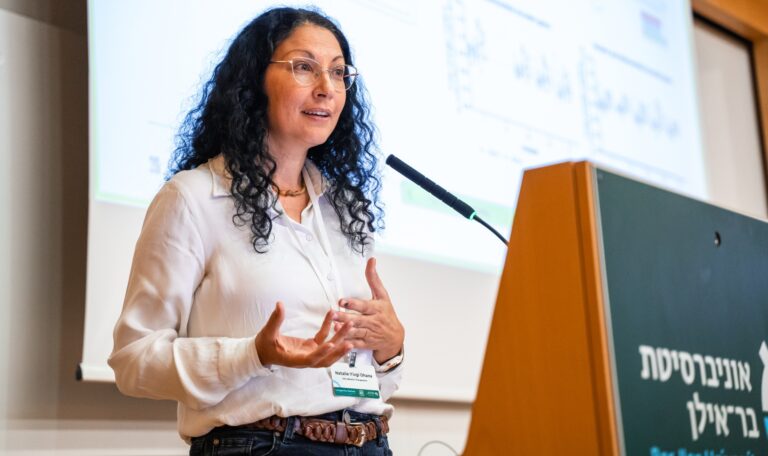
Yivgi-Ohana is developing mitochondria augmentation, a personalized cell therapy.
Diseased hematopoietic stem cells (immature blood cells) are taken from a patient and enriched with healthy mitochondria. They’re then injected back into the patient to restore mitochondrial function to the entire body, including the immune system.
The company is also developing blood biomarkers to measure mitochondrial dysfunction in multiple diseases.
We’re as old as our arteries
“Past age 30 we start losing 1% of our lung capacity every year,” said Hebrew University/Hadassah Medical School vascular biology researcher Myriam Grunewald.
“But our kidneys only start losing function after age 50. The brain doesn’t start noticeably losing function until past the age of 70,” she said.
The aging of blood vessels is key to this gradual degeneration because they bring organs nutrients and hormones, remove waste and secrete endocrine factors for functionality and healing.
“People are as old as their arteries,” said Grunewald.
“If the aging of vasculature impacts functioning of all organs, can we delay vascular aging?”
Her lab found that the tiny capillaries leading from blood vessels to cells disappear as we age, due to a decrease in vascular endothelial growth factor (VEGF).
Experiments in mice showed that increasing VEGF signaling capacity in young mice prevented age-associated capillary loss. They had improved organ function, improved immunity and longer lifespan.
Stepping up VEGF signaling capacity also seemed to protect the mice against cancer, which Grunewald is now investigating further.
Banishing old cells
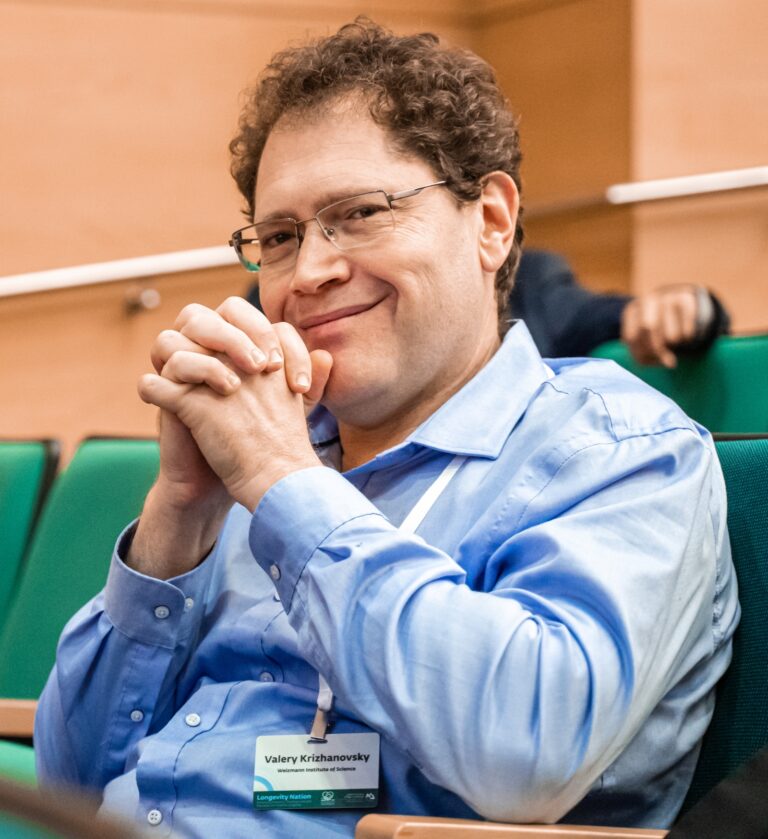
When cells age and stop dividing, that’s called cellular senescence. In the short term, senescence protects against DNA damage and tumor formation. Then the immune system eliminates the senescent cells.
As we age, however, senescent cells resist removal, building up and contributing to inflammation and age-related diseases.
Valery Krizhanovsky’s lab at the Weizmann Institute is studying why senescent cells accumulate in aging and how regulating that accumulation may extend lifespan.
“In the last decade, we’ve learned that if we eliminate senescent cells in mice we can extend their lifespan and health span by about 25-30%,” Krizhanovsky said.
His lab is now researching how to activate the immune system to clear them more effectively in aging mice.
Preventing frailty
Prof. Haim Cohen from Bar-Ilan University updated attendees on his lab’s “Moses” mouse model that lives 30-50 percent longer than usual, without becoming frail.
“Not only were we able to extend life but we were able to extend healthy life,” Cohen said. “We saw delayed or blocked diseases.”
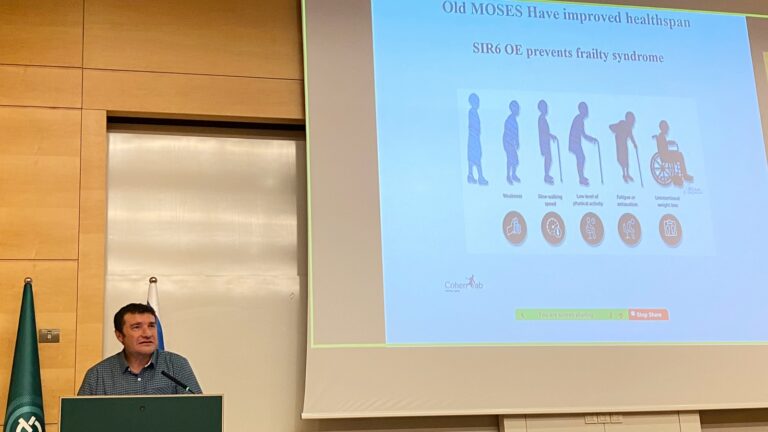
Moses mice are engineered with an overexpression of the SIRT6 enzyme, which powers cellular functions such as DNA repair, inflammation prevention and glucose metabolism. (Mice engineered without any SIRT6 age and die prematurely.)
Among other health advantages, Moses mice never develop the frailty signs — weakness, slow walking, exhaustion, and unintended weight loss — that affect up to 10% of individuals above 65 and 30% of people over 80, Cohen said.
SIRT6 seems to block frailty by increasing liver metabolism and muscle activity, blocking brain inflammation and suppressing tumor development.
Cohen is launching a startup, SirTLab, to translate the Moses findings into a SIRT6-activating drug. He’ll discuss it on May 17 at the Biomed Israel conference.
Environment + genetics
Dr. Nir Barzilai, director of the Longevity Genes Project at New York’s Albert Einstein College of Medicine, discussed his ongoing two-decade study of hundreds of healthy elders between the ages of 95 and 112 and their children to determine the role of genetics in exceptional longevity.
Barzilai’s colleague Prof. Gil Atzmon, now at the University of Haifa, said genetics accounts for about 10-20% of the healthy longevity of exceptionally long-lived individuals (ELIs), while environmental factors – such as smoking and stress — have a negligible effect.
“So what is the major reason they live longer? We think that epigenetics, the combination of genetics and environment, accounts for 80-90% of the phenotype variants [observable characteristics] for longevity,” he said.
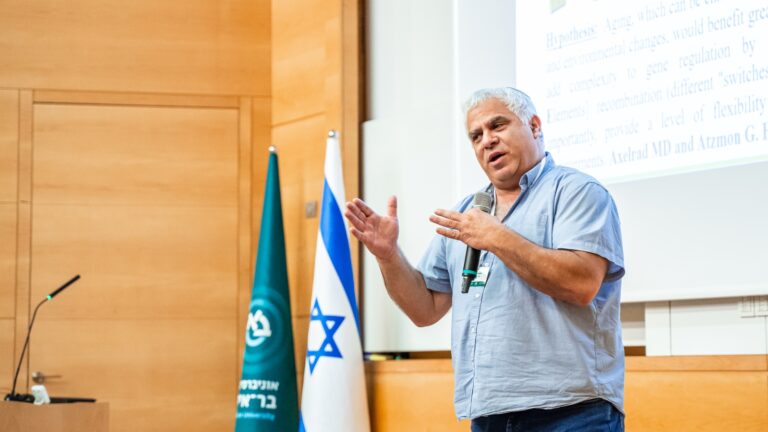
Atzmon’s “switch theory” may explain ELIs’ unusual genomic flexibility.
“A regular light switch can only be turned on or off. But if you replace it with a dimmer switch, you can be more flexible in the amount of light you have in the room,” he explained.
“My hypothesis is that ELIs have many more ‘dimmer switches’ than most people and therefore can adapt to any given environment.”
His lab studied the whole-genome sequence of 150 ELIs — and 150 controls 30 years younger — to look for hot spots of methylation, a natural chemical process that turns on genes that foster good health and turns off genes that foster poor health.
“If they can’t be turned on or off, they’re useless,” he pointed out.
Indeed, they found a higher methylation percentage in ELIs. “If the switches can be changed by environment, we can play with them,” he said.
“Adaptation to environmental stressors is the bottom line. Such a mechanism can provide resilience to specific diseases and not just longevity.”
















